What do candidates on the plc fault finding training course actually do?
Candidates on the PLC Fault Finding course begin by learning about the programming languages used with PLCs and the typical applications they are put to. They then look at the various expansion modules, wiring and connections typically found. This is all done without getting involved in the internal PLC architecture, boolean logic principles or number system theories: We don't feel that these subjects are appropriate to candidates who are learning about maintenance of PLC systems.
A few of the early pages from the course notes give an indication of this approach:
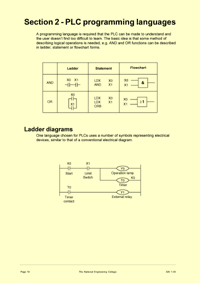 |
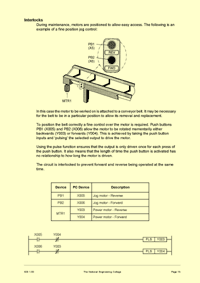 |
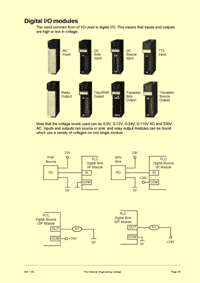 |
Page 10 of the PLC training courses notes, describing the various languages used to communicate with PLCs |
Page 15 of the PLC training courses notes, one of the example applications explaining how PLCs are used in industrial control systems |
Page 29 of the PLC training courses notes, providing examples of the input and output modules that industrial PLCs employ and how they would be connected |
We then introduce our specially-designed industrial simulators which incorporate conveyors, motors, solenoids and industrial sensors to engage the candidates in the complex control issues dealt with by industrial PLCs:
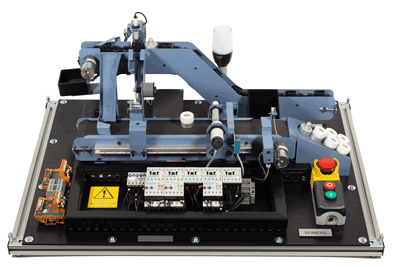 |
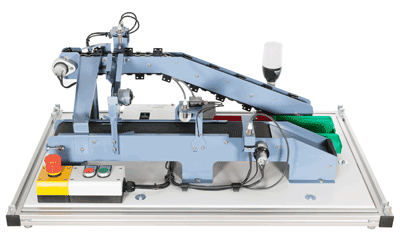 |
One of the industrial simulators used on the PLC training courses, controlled by the Siemens S7 PLC |
One of the industrial simulators used on the PLC training courses, controlled by the Mitsubishi FX0 PLC |
 |
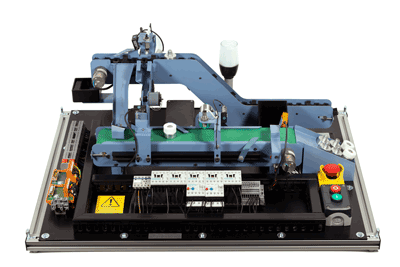 |
One of the industrial simulators used on the PLC training courses, controlled by the Omron Sysmac CP1E PLC |
One of the industrial simulators used on the PLC training courses, controlled by the Allen Bradley PLC |
Candidates are then presented with a range of pre-programmed PLCs. These employ complex industrial-style programs. Examples of some of the programs are shown here, extracted from the PLC course notes:
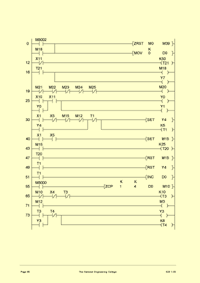 |
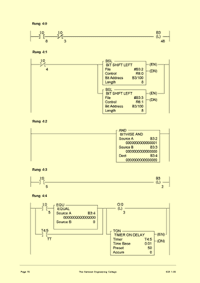 |
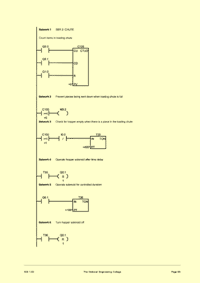 |
Page 60 of the PLC training courses notes, presenting the ready-written Mitsubishi PLC program |
Page 70 of the PLC training courses notes, presenting the ready-written Allen Bradley PLC program |
Page 83 of the PLC training courses notes, presenting the ready-written Siemens S7 PLC program |
The PLCs used on the course are shown below:
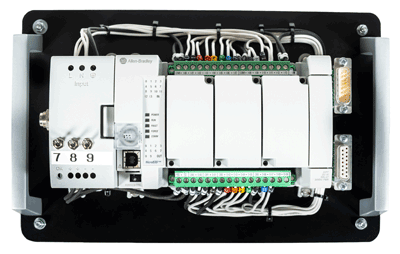 |
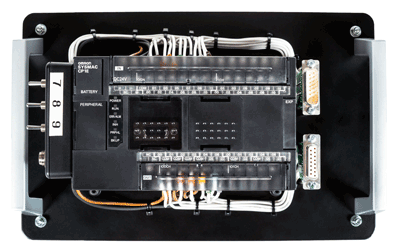 |
The Allen Bradley PLC |
The Omron Sysmac CP1E PLC |
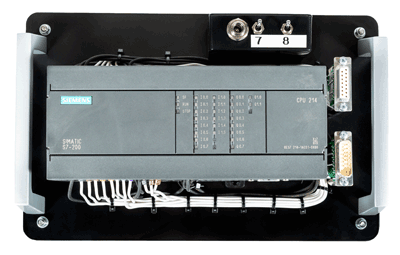 |
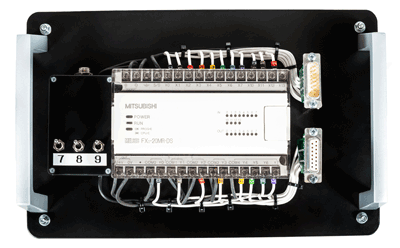 |
The Siemens S7 PLC |
The Mitsubishi FX0 PLC |
Candidates then use PCs running real versions of each manufacturer's software to communicate with our PLCs.
We use a range of software:
» Allen Bradley (Rockwell)
» Mitsubishi FX-GP Win
» Siemens Step 7
» Omron CX1.
Candidates have to get familiar with at least three of these software packages during the course:
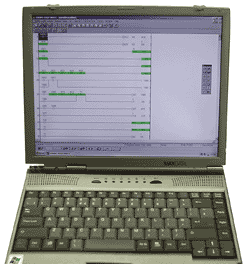 |
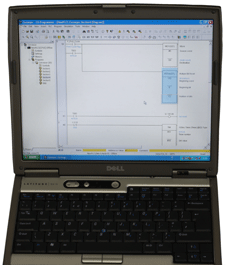 |
The Mitsubishi FX-GP WIN PC-based software package |
The Omron CX1 PC-based software package |
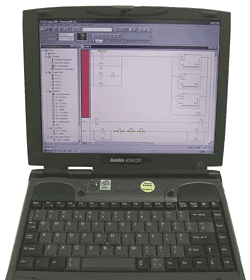 |
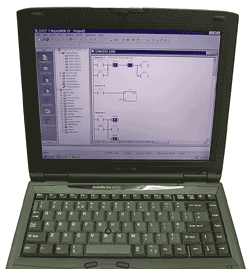 |
The Allen Bradley PC-based software package |
The Siemens Step 7 PC-based software package |
Some candidates and employers are interested in certain other PLC systems like the Siemens S5, The Mitsubishi Alpha or the Modicon TSX system and if required these can be integrated into the course.
Candidates can, of course, concentrate on using the PC software and handheld devices appropriate to them. We feel that experiencing various manufacturer's PLCs and software provides a much more holistic understanding of PLCs than a single-platform approach (using PLCs and software from only one manufacturer, for instance).
The course incorporates fault finding exercises, where we can simulate broken sensors, field wiring faults, power supply faults, PLC input module faults and PLC output module faults. Candidates are guided through a systematic method of fault finding on PLC-controlled systems, using our specially-designed fault finding flowchart:
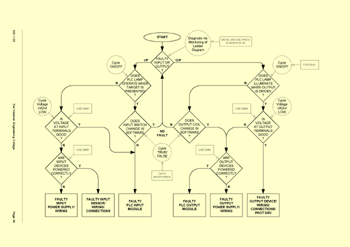 |
Page 39 of the PLC training courses notes, depicting the flowchart |
Safety issues are, of course, paramount considerations, and the dangers of applying output forces, modifying the values of timers and counters, the dangers of electric shock whilst working 'live' and making measurements, as well as the physical dangers associated with unexpected movement of the controlled system are all covered on the course.
The clear distinction that this course is about fault finding and maintenance and not about programming also helps to make it clear to candidates that they should not be interfering with the program held inside the PLC - a major safety consideration in many industries.
Candidates who complete this course are in a good position to advance to the PLC programming course (if appropriate to them) or on to a more challenging manufacturer-specific course (if necessary).
If you would like to see some of the equipment used on the PLC Fault Finding course for yourself, then please call us to arrange a visit to our offices in Kent. Alternatively, we can visit you anywhere in the British Isles.


